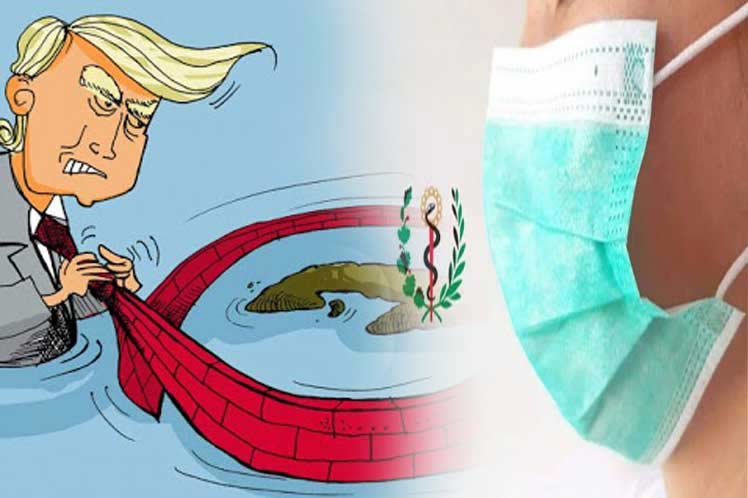Cuba: Here, a summary of the economic and social situation Cuba experienced in the last 12 months, marked by the appearance of the new Coronavirus and the tightening of the blockade that the United States has imposed on the Island for more than 50 years.
The economic situation that it had to face since the beginning of the year was reinforced with the emergence of COVID-19 from the first cases that were registered on March 11 in our country.
The strategy to deal with COVID-19 in Cuba differs significantly from that applied in other countries, first of all, due to the free health services, the massive mobilization of all the medical and paramedical forces necessary to care for the sick, the massive investigations of the entire vulnerable population and the availability of enough medicines and hospital facilities for this.
As prevention measures, the use of the mask face outside the homes, the frequent washing of the hands and the use of foot steps when entering the premises or houses were made mandatory.
Likewise, economic and social conditions were created to facilitate social isolation with people staying at home for as long as possible.
As a noteworthy element in the development indicated, on August 20 the start of the trials of the first Cuban vaccine candidate against COVID 19, called Soberana 01, was announced. A second vaccine candidate ?Soberana 02- was subsequently developed and there are already the third candidate, Soberana 03. These advances are unique in Latin America.
Thus, according to information from the Ministry of Labor and Social Security, until June 146 thousand 507 state workers saw their work interrupted, especially those linked to the tourism sector, 33% were relocated to other positions and the rest received a 60% subsidy of the salary from the second month of termination of their job. On the other hand, in May already 600 thousand 38 workers had taken advantage of the modality of remote work from their homes.
In general, the state budget to face the pandemic exceeded one billion pesos in the first half of the year.
An element that marked Cuba’s confrontation with the pandemic is its solidarity with other peoples. In this regard, the Cuban Minister of Public Health reported that until September 53 medical brigades of the Henry Reeve Contingent traveled to 39 countries, already treating 528,737 patients, in the fight against COVID-19 and saved 12,285 lives.
The outbreak of the COVID-19 pandemic highlighted and fueled the crisis that had been brewing in the neoliberal model that the economies of the capitalist world have applied for years.
Cuban society did not escape these impacts, which also occur in the midst of the strengthening of the US blockade against our country.
The reduction in the economic results of 2020 mainly reflects the enormous impact of the aggressiveness against Cuba developed by Donald Trump?s administration, which has increased in recent months, reaching the number of 121 new punitive measures implemented since 2019 until the present.
The measures include the application in all its aspects of the Helms Burton Law and the persecution of oil shipments sent from Venezuela to Cuba, which caused the economy to operate with only 50% of the fuel needed since September 2019.
At the end of March 2020, there was a total paralysis of international tourism, when the fall in the number of visitors reached 49% in the first four months of the year.
This represented an estimated loss of about $ 483 million in the first quarter of 2020.
To this was added the loss of export markets for medical services in Brazil, Ecuador, Bolivia.
Brazilian President Jair Bolsonaro, a close ally of Washington, affirmed at the UN that Cuban doctors perform slave and exploited work abroad, was one of the initiators of the crusade in 2018, mistreating those who worked in his country and thus provoke the decision by Havana of his return to the country.
The country came to operate for more than six months, at various times, with 50% of the fuel required and it was necessary to acquire energy carriers in Russia, Algeria and Angola under market conditions.
A noticeable effect on industrial production can be seen in the decrease in pharmaceutical production, which registered a shortage of 139 lines of medicines at the end of April.
Finally, the gross domestic product (GDP) of Cuba this year, according to estimates valued at constant prices, decreased 11% due to the sharp contraction in foreign trade, the reduction in international tourism and foreign exchange earnings, due to the effects of COVID -19 and the tightening of the blockade.
The measures adopted to face the energy situation and the reorganization of a set of productive activities and services, allowed to face this complex context and that the fall in GDP was not greater.
And so far this summary of the socio-economic situation of Cuba in the last calendar.

